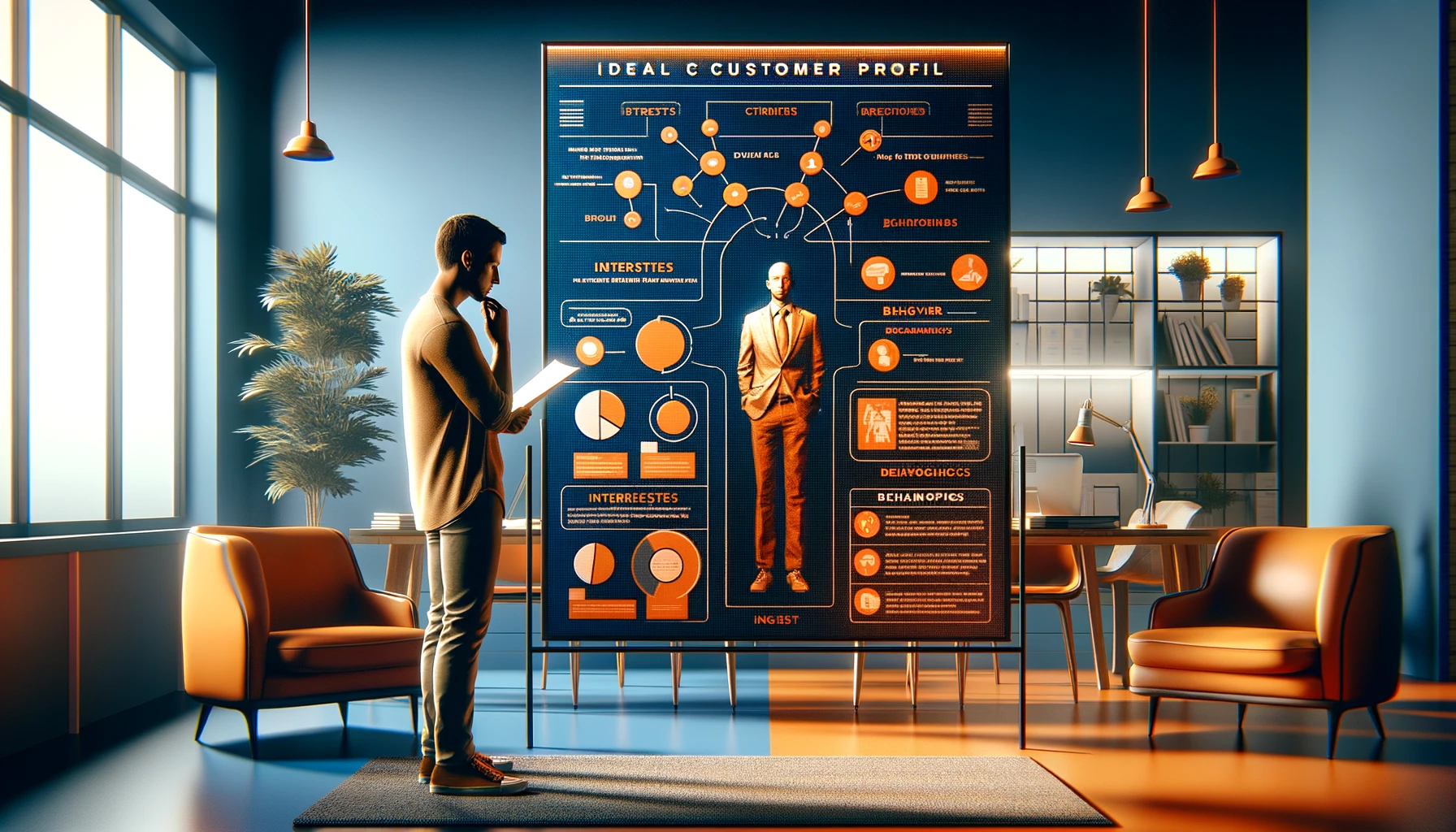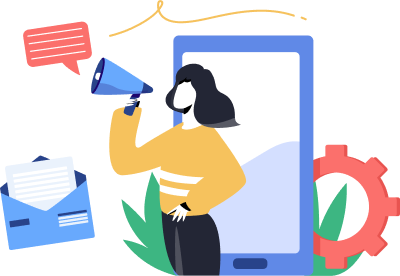
Exploring the Relationship Between ICP and Personalization in Marketing
Ever wondered why some marketing messages feel like they're speaking directly to you? And others? They scream “This was sent to 1000 other people.” That's the magic of a company that has their ICP nailed and has found a balance with personalization. Let's dive into this dynamic duo and see how they're changing the game in marketing.
What is ICP?
An ideal customer profile (ICP) is your marketing bullseye. It's a detailed sketch of who you're aiming your efforts at. Think of it as a mix of firmographic, environmental, and behavioral traits that paint a picture of your perfect customer. You've gotta understand your ICP to hit the mark in marketing. Unfortunately, most companies have phoned it in on defining their ICPs and only touch on basic firmographics to detail who their customer is. The implications of this is poor messaging and the inability to truly personalize your content in a way that will resonate with your audience and connect them to your company’s value proposition.
Imagine you're a detective piecing together clues about your ideal customer. You're looking at things like their job title, industry, budget, and how they make purchasing decisions. It's like putting together a puzzle where each piece is a bit of info about your business and customers.
What is Personalization?
Now, let's talk about personalization. Gartner says it's all about creating interactions that feel personal and relevant. It's like having a conversation where you're talking directly to your customer, not at them.
Personalization is a big deal. McKinsey reports it can cut customer acquisition costs by up to 50% and boost your marketing ROI by 10% to 30%. That's huge, right? And here's a kicker: during COVID-19, three-quarters of customers switched brands for ones that offered more personalized experiences. Talk about a game-changer!
What’s the Relationship Between Your ICP and Personalization?
So, why throw your marketing budget into the wind when you can use ICP for a bullseye? Once you nail your ICP, personalizing your customer’s experiences becomes a walk in the park. It's like knowing exactly what gift to buy for a friend because you know them so well.
Here's a breakdown of how ICPs and personalization team up in marketing:
🎯 Build a Highly-Targeted Audience: With a solid ICP, you're like an archer with a clear target. You know who to aim your marketing arrows at, making your efforts more effective and personal.
Learn how Air Traffic Control cuts your LinkedIn CPCs by 80% with building a highly targeted ad audience
✈️ Craft Messaging and Content that Lands: It's all about hitting the right notes. With ICP, you can craft messages that resonate deeply with your audience, like playing their favorite tune.
⏰ Efficient Resource Allocation: ICP helps you focus your resources on the right crowd, repurposing content and ensuring you're not shouting into the void.
🤝 Improved Customer Engagement: When customers feel understood, they stick around. It's like making a new friend who really gets you.
Basically, it allows you to not be this guy 👇
5 Ways to Personalize Marketing Using Your ICP
In today's digital era, where personalization is key, comprehending and focusing on your ideal customer profile can elevate your marketing strategies to a new level of accuracy and effectiveness.
Here are five impactful approaches to personalizing content using ICP, equipping you with the means to captivate and convert your ideal audience effectively.
1. Find and Examine the Content that Performs Exceptionally Well
Before creating new content, it is important to check your analytics for content that is performing well. It could be blog posts with hundreds of thousands of page views or articles with the most shares. Analyze to identify that which is driving so much traffic to such content. It could be the tone, the subjects discussing the information, or the format.
Additionally, check where the traffic comes from organic search, paid ads, email marketing, and social media. Such information will give you insights into your customers’ preferences and needs.
2. Develop Data-Driven Buyer Personas
Although ICP and buyer persona are used interchangeably, ICP is a company-level profile while buyer persona is an individual-level profile. Read more about the differences between the two in our blog post “Cracking the Code: Why Your ICP is the Secret Weapon in Marketing Success.”
You must collect qualitative and quantitative data from existing prospects, leads, and customers to create data-driven buyer personas. Some of the data you need to consider include the company's size, industry, and job role.
With your personas in place, creating personalized content that resonates with individual roles or those personas’ challenges becomes easy.
3. Use Automation and AI Tools
Automation and artificial intelligence (AI) tools are important personalization tools. Tools such as personalized emails and AI-powered content recommendation engines can make your personalization efforts more in sync with your ICP.
For example, AI can analyze a user’s interaction with different web pages and identify which content the user likes the most. It will then recommend more of such content to them.
4. Integrate Your Content With the Buyer’s Journey
The buyer’s journey in marketing refers to the process leads go through, from becoming aware of a product or service, considering and evaluating the product or service, and deciding whether or not to purchase. It comprises three stages: awareness, consideration, and decision.
Understanding where your customer is in the buyer’s journey will help you in your personalization efforts. In the awareness stage, informative content will help the customer understand the product or service.
In the consideration stage, comparisons and case studies can help one make a choice now that they understand the product or service. Last, in the decision stage, information such as customer testimonials and live demonstrations may ultimately help a lead convert.
5. Enact Personalization in Multichannel Marketing
Multichannel marketing involves engaging customers on various platforms, including email, social media, blogs and websites, and mobile apps. This enhances the overall customer experience and maximizes marketing opportunities. If you can effectively personalize content across all these channels, you can elevate your ICP targeting.
Strive to create a consistent and customized brand image across all your marketing platforms. Ensure that your customers encounter a cohesive experience as they transition between various channels, such as moving from email to your website or from a social media ad to your mobile app.
Achieving this level of coherence requires the application of deep learning and pattern recognition on extensive datasets. However, this effort has the potential to significantly enhance your business's worth by enhancing customer satisfaction and fostering loyalty.
Time for Takeoff!
So, you're armed with ICP and personalization knowledge. Time to turn your marketing game up a notch! Remember, ICP and personalization are like peanut butter and jelly – great on their own but unbeatable together. They help you target your ideal customers and provide experiences that drive loyalty and engagement. Now go out there and make your marketing messages hit home!
Don't let your marketing messages be just another drop in the ocean. Make them count. Make them resonate. Make them personal. Discover how Air Traffic Control can revolutionize your marketing strategy and help you connect with your audience in a way that's not just heard, but felt.

Subscribe to the
Air Trafic Control newsletter
Receive regular tips and resources to boost your establishment!
